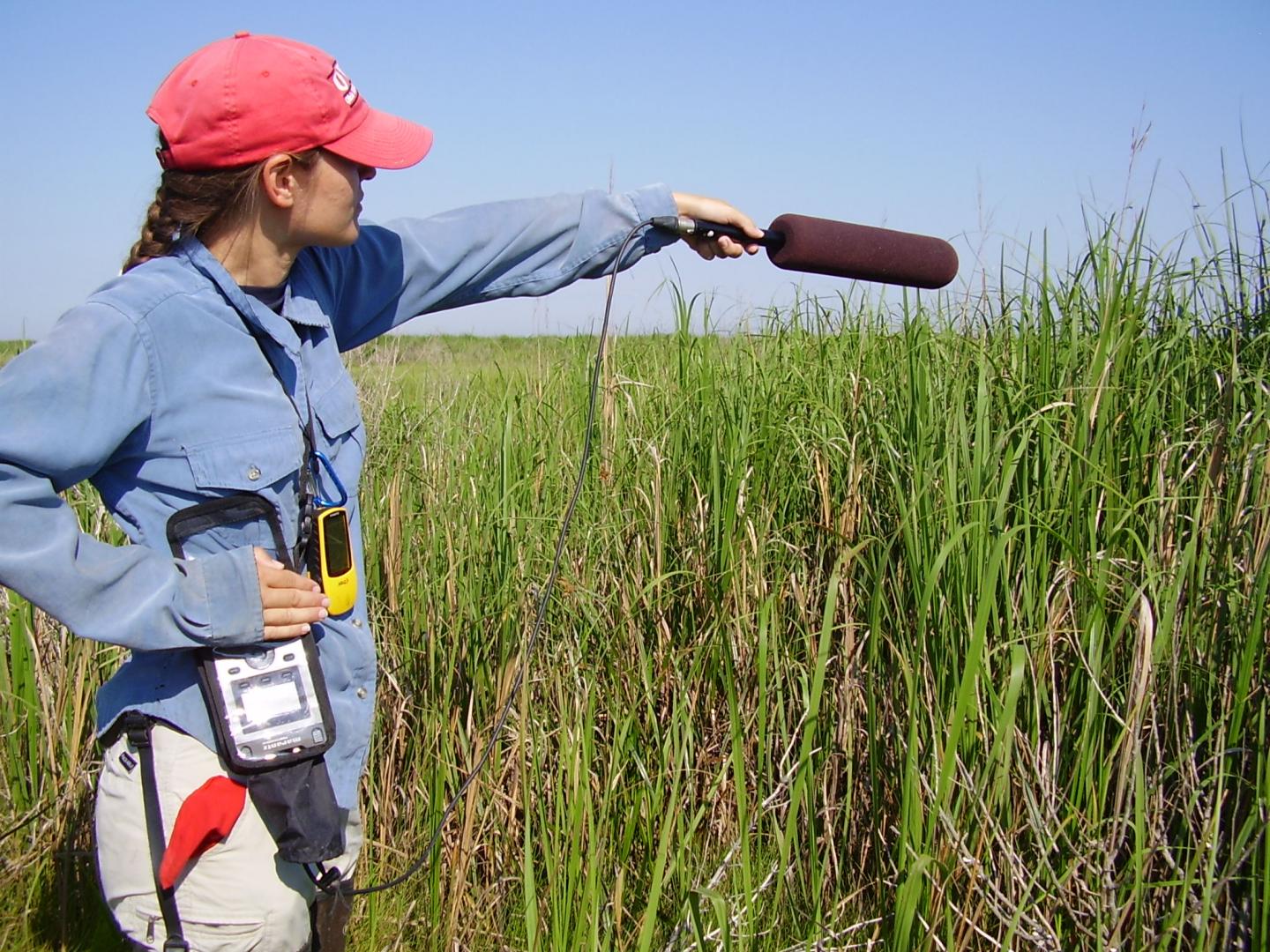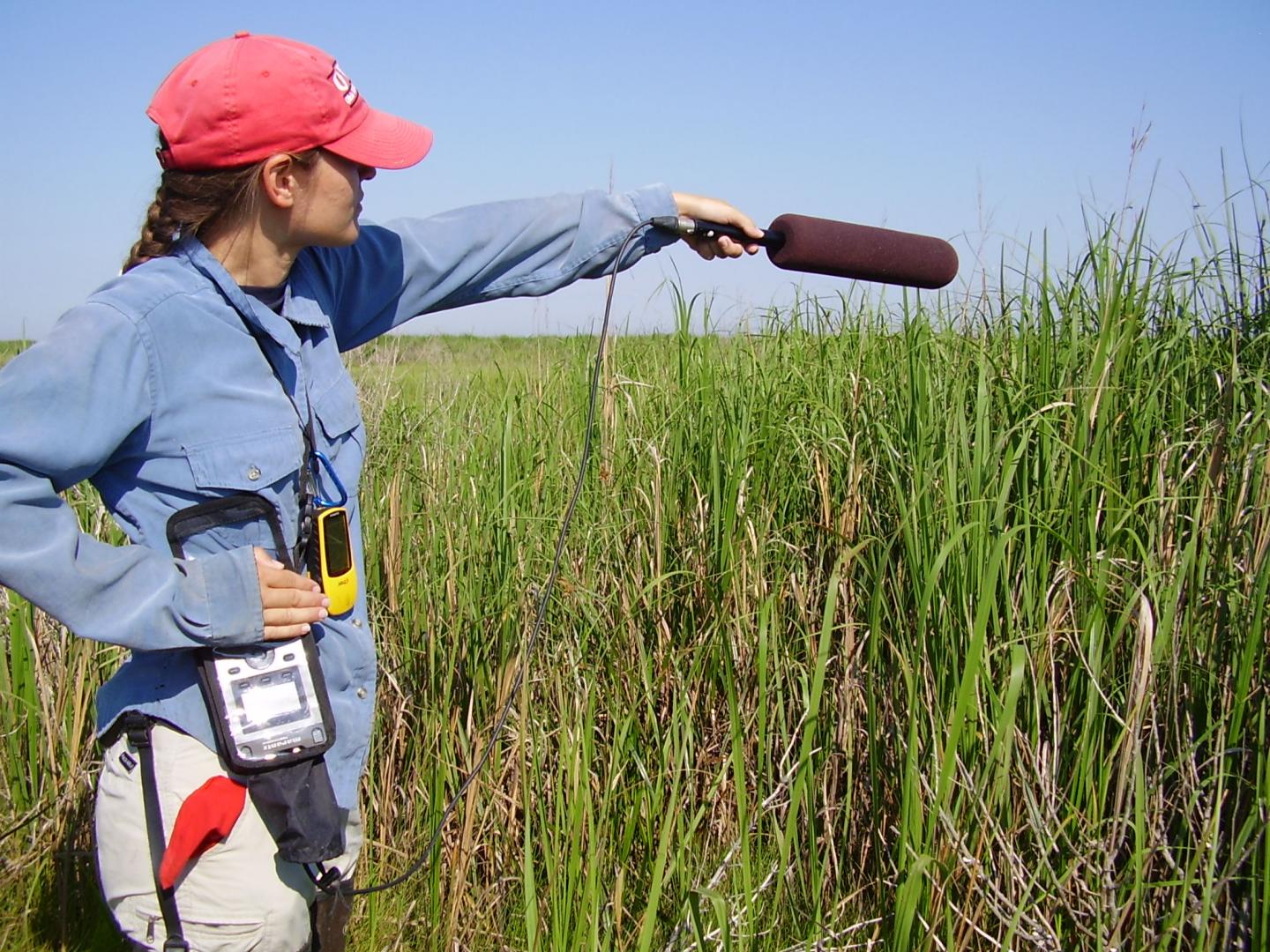
Credit: S. Luttrell
Birds' songs and the ways they vary between places have been well studied–but what can the simpler vocalizations known as calls tell us about bird biology? A new study from The Auk: Ornithological Advances provides the first detailed description of how Marsh Wren calls vary across eastern North America and hints at the evolutionary processes playing out between wren subspecies.
The University of Maryland Baltimore County's Sarah Luttrell and Bernard Lohr recorded the calls of five Marsh Wren subspecies at nineteen different sites, encompassing the Gulf Coast, Atlantic Coast, and Great Lakes regions and including migratory, nonmigratory, freshwater marsh, and saltwater marsh populations. Categorizing the recordings into seven different call types, they analyzed how calls differed between subspecies. While some calls were associated with territory patrol, nest building, and courtship, others were used mainly during aggressive encounters with predators or other wrens. Both the acoustic characteristics of some calls and how frequently they were used differed from place to place.
"It was certainly a lot of work to compile data on multiple vocalizations and compare the results, but in the end, it makes for a more nuanced understanding of how various evolutionary processes shape animal behavior as a whole," says Luttrell. "Twitter" calls differed between migratory and nonmigratory subspecies, for example, while "buzz" and "trill" calls differed between birds that lived in freshwater and saltwater marshes; while differences in habitat can't directly explain this, all of these call types could be shaped by sexual selection that reinforces the boundaries between subspecies. Atlantic Coast populations produced the "chuck" alarm call more often than others, which suggests they may experience more threats from predators or nest at higher densities that lead to more antagonistic encounters between birds.
Could these differences eventually prompt Marsh Wren populations to diverge into fully separate species? "That's impossible to say for sure–it all depends on the course that evolution takes!" says Luttrell. "We were excited that the patterns of call variation we observed seemed to coincide with differences ecology and life history, which suggests the possibility that these subspecies are evolving in different directions. In the future, we're hoping to do some behavioral tests that might help us understand how much the acoustic differences matter to the birds' behavior in the wild. If we do find that individuals respond less strongly to the vocalizations of another subspecies than to their own, then that would be additional evidence that at least some subspecies are on a trajectory of divergence."
"This study highlights the diversity of calls that can be found in a single avian repertoire, and nicely illustrates how different elements of those repertoires can evolve independently," according to the University of Northern Colorado's Lauryn Benedict, an expert on communication in wrens and other songbirds. "The demonstrated patterns of call use in relation to behavioral context, caller sex, habitat, and migratory behavior raise many future avenues of inquiry. Avian calls are a generally understudied vocalization, and this paper demonstrates how and why we all should pay them more attention."
###
"Geographic variation in call structure, likelihood, and call-song associations across subspecies boundaries, migratory patterns, and habitat types in the Marsh Wren (Cistothorus palustris)" will be available December 27, 2017, at http://www.bioone.org/doi/full/10.1642/AUK-17-110.1 (issue URL http://www.bioone.org/toc/tauk/135/1).
About the journal: The Auk: Ornithological Advances is a peer-reviewed, international journal of ornithology that began in 1884 as the official publication of the American Ornithologists' Union, which merged with the Cooper Ornithological Society in 2016 to become the American Ornithological Society. In 2009, The Auk was honored as one of the 100 most influential journals of biology and medicine over the past 100 years.
Media Contact
Rebecca Heisman
[email protected]
http://americanornithologypubs.org/
Related Journal Article
http://dx.doi.org/10.1642/AUK-17-110.1





